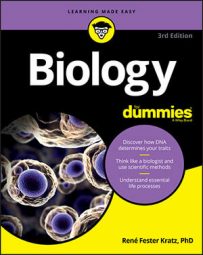- They are made of cells that contain DNA.
- They maintain order inside their cells and bodies.
- They regulate their systems.
- They respond to signals in the environment.
- They transfer energy between themselves and their environment.
- They grow and develop; they reproduce.
- They have traits that have evolved over time.
Key concepts in human biology and physiology
-
Organisms are made of organ systems, which are made of organs, which are made of tissues, which are made of cells, which are made of molecules, which are made of atoms.
-
Homeostasis is the balance, or equilibrium, of the body. Regulation of all the body’s systems seeks to keep the body in homeostasis.
-
The heart is a muscular pump. Contractions by the heart push blood through the circulatory system.
-
Within the circulatory system, blood travels in arteries to carry oxygen from the lungs to the tissues and returns through veins to carry carbon dioxide from the tissues to the lungs. Blood also carries nutrients from the digestive system to the cells of the body and removes wastes from the cells.
-
Exchange of the respiratory gases, oxygen and carbon dioxide, occurs in the lungs.
-
Digestion involves the mechanical and chemical breakdown of food molecules into their smallest subunits. Digestion begins in the mouth and continues in the stomach and small intestine.
-
Absorption of nutrients in the digestive system occurs through the cells of the small intestine.
-
Glands are organs in the endocrine system that secrete hormones. Hormones are chemical messengers that can alter the behavior of target cells.
-
The nervous system consists of two main systems, the central nervous system (CNS) and the peripheral nervous system. The CNS is made up of the brain and spinal cord and sends out instructions. The peripheral nervous system contains the nerves that send the messages from the CNS to the rest of the body.
-
The muscular and skeletal systems work together to allow movement. The muscles contain fibers that can contract, while the skeleton provides support and structures for muscles to pull against.
Natural selection and biological evolution
When studying Biology, you’ll hear about biological evolution, which refers to the change of living things over time. Charles Darwin concluded that biological evolution occurs as a result of natural selection, which is the theory that in any given generation, some individuals are more likely to survive and reproduce than others. In order for natural selection to occur in a population, several conditions must be met:
-
Individuals in the population must produce more offspring than can survive. Human beings are somewhat unique among living things in that we can make conscious choices about how many offspring we have. Most other organisms, however, produce as many offspring as they can.
-
Those individuals must have different characteristics. During Darwin’s time, no one knew where these differences came from. Now scientists know that differences in organisms arise due to mutations in DNA combined with the mixing of genetic information during sexual reproduction.
-
Offspring must inherit some characteristics from their parents. During Darwin’s time, the laws of inheritance were just beginning to be figured out, so Darwin didn’t know exactly how parents passed on their traits. Modern scientists know that traits are inherited when parents pass genes on to their offspring.
-
Organisms with the best-suited characteristics for their environment are more likely to survive and reproduce. This is the heart of natural selection. If there’s competition for survival and not all the organisms are the same, then the ones with the advantageous traits are more likely to survive. If these traits can be inherited, then the next generation will show more of these advantageous traits.
If these four conditions are met, then the new generation of individuals will be different from the original generation in the frequency and distribution of traits, which is pretty much the definition of biological evolution.
Biological reproduction and cell division
Biology is all about life. In order for life to continue, reproduction has to occur at the cellular level so that genetic information (DNA) is replicated. The following concepts (mitosis and meiosis) are key to understanding how cells reproduce:
-
Cells do mitosis when they are going to make an exact copy of themselves for asexual reproduction, growth, or tissue repair. DNA replication occurs once, followed by a single division. The parent and daughter cells are both diploid, which means they have a double set of chromosomes.
-
Cells do meiosis in order to produce gametes (eggs and sperm) for sexual reproduction. DNA replication occurs once, followed by two divisions. The parent cell is diploid, but the daughter cells are haploid, which means they have half the number of chromosomes as their parent cells.

